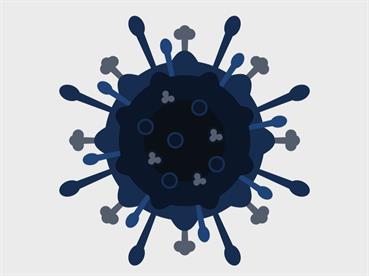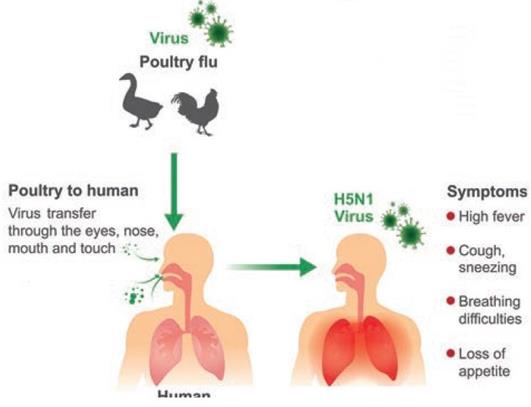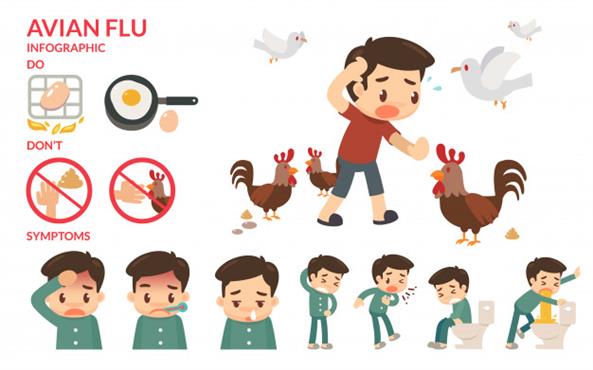PDF chapter test TRY NOW
Avian influenza is also known as avian flu or bird flu. In 1996, the avian influenza virus A (H5N1) emerged in southern China and Hong Kong. H5N1 type of influenza virus causes a high proportion of deaths in poultry; therefore, it is a highly pathogenic avian influenza virus. H5N1 was first discovered in humans in 1997 by the World Health Organisation. The first outbreak was in December 2003. Avian influenza is a highly contagious bird disease caused by a number of viruses. Birds that can carry and spread a bird flu virus include poultry (like chickens, turkeys or ducks), wild birds and even pet birds. The virus infected people during outbreaks in Africa, the Middle East, and parts of Europe.
Disease: Avian influenza
Causative agent: Influenza Virus H5N1.

Influenza Virus H5N1
Incubation period: The incubation period of the virus is usually \(2\)-\(7\) days.
How its spreads:
People who have close contact with infected birds or surfaces contaminated from the bird’s secretion (through the mouth, eyes, mucus, nasal secretion or droppings, bird faeces) transmit this disease. This virus enters the human body via the eyes, nose, mouth and touch.

Transmission of Avian influenza
Symptoms:
- Fever
- Cough
- Sore throat
- Running nose
- Muscle and body aches
- Fatigue
- Headache
- Redness of eyes (conjunctivitis)
- Difficulty in breathing
- Loss of appetite

Symptoms of Avian influenza
Prevention and Control:
- Avoiding open-air markets where infected birds are sold.
- Avoiding contact with infected birds or consumption of infected poultry.
- Practice proper cleaning and cooking of poultry.
- Individuals can reduce the spread of Avian influenza by taking preventative measures.
- As a general precaution, we have to follow some preventive measures.
- Avoid contact with poultry birds like chickens, turkeys or ducks that appear sick or have died.
- To avoid cross-contamination, use hot, soapy water to wash the cutting boards, vessels and all surface area that have come into contact with raw poultry.
- Avoid contact with surfaces that appear to be contaminated with faeces from wild or domestic birds.
- Cooking poultry (e.g. chicken, ducks and geese) at or above \(70\ degree\ Celsius\) so that absolutely no meat remains raw and red. It is a safe way to kill the virus in areas with outbreaks in poultry.
- The eggshell should be cleaned because there is a chance of contamination with bird droppings.
